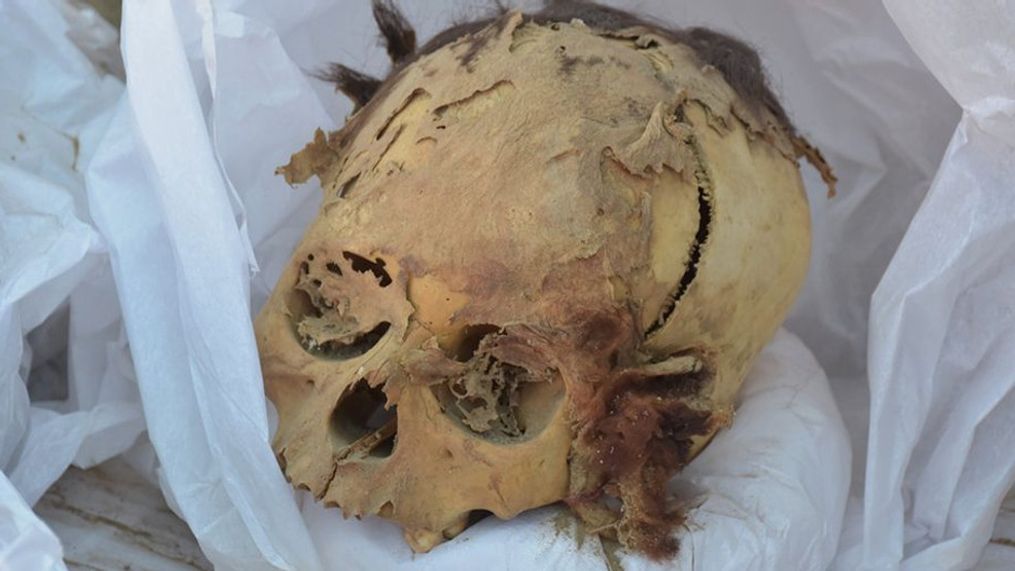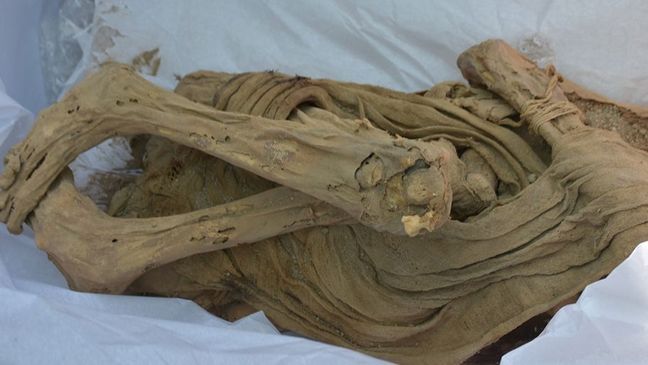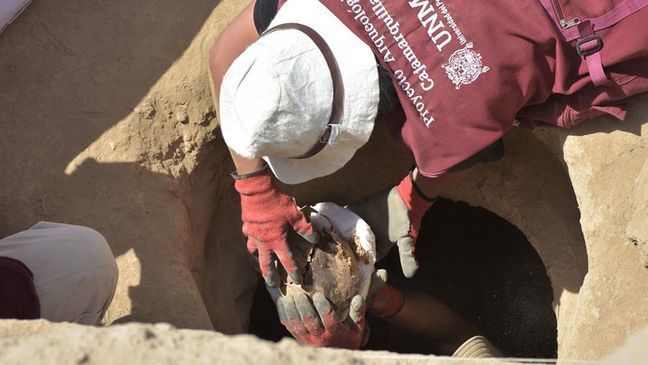Archeologists unearth a nearly 1,000-year-old 'child' mummy in Peru
WASHINGTON (TND) — Archeologists in Peru have unearthed what's being described as a nearly 1,000-year-old child mummy.
The mummified adolescent -- who was approximately 12 or 13 year old when he or she died -- was discovered by a team of researchers led by archaeologist Yomira Huamán, according to a news release the National University of San Marcos posted on its website Monday.
The remains of a pre-Columbian individual around 800 years old were found in the Cajamarquilla Archaeological Complex, in Lima," the release, which was published in Spanish and translated via Google Translate, noted.
The child, whose gender wasn't immediately known, had an approximate height of "one meter and thirty centimeters" and "would have lived in the late intermediate period (1200-1400 AD), probably as an inhabitant of the Lima or Yshma culture."
Huamán said coarse sand in the area likely created "a natural mummification process," which allowed the arms and legs to retain remains of skin. The head, which was separated from the body, has tufts of hair, "and in the case of the jaw, part of the teeth can still be seen."
The remains, saidHuamán, were discovered more than two meters deep, "in a funerary matrix" covered by a mud rock.
There were also several items found next to the body, such as a stone weapon, plate, copper needle, textile materials, and botanicals, such as corn and chili peppers.
After removing the body, the specialist explained, the cabinet stage continues, where the analysis of the body, botanical, malacological (seashells), lithic and metal material will be carried out," according to the release. "This phase of the investigation is very important because ... it will be possible to identify the activities carried out by the individual, that is, what he did; what he could have died of and the diseases he suffered, among other aspects."
The release noted that the "Cajamarquilla Archaeological Project" began in December and will conclude by the end of 2023. So far, three units have been excavated and another four are in the process.




